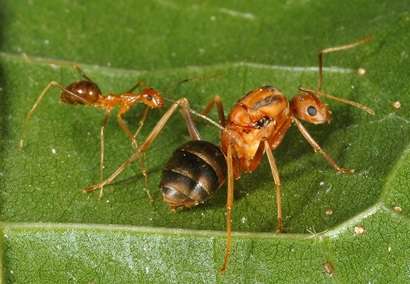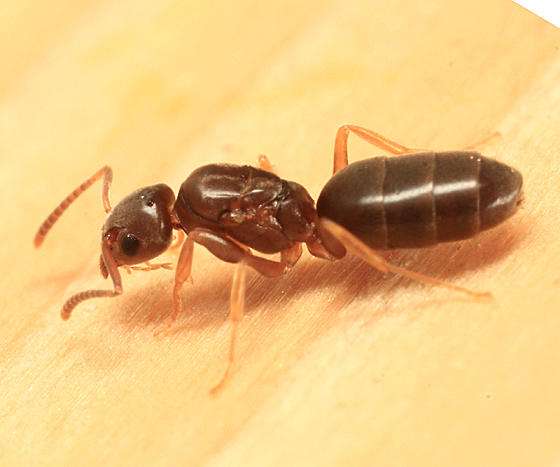
They have unintentionally spread to many tropical regions throughout the world.
Due to its irrational motions when startled, the yellow crazy ant has earned the descriptor “crazy” in common usage. It is one of the biggest invasive ant species in the world thanks to its enormous legs and antennae.
Distribution
The damp tropical lowlands of Southeast Asia, as well as the adjacent regions and islands in the Indian and Pacific Oceans, are the yellow crazy ant’s natural habitats. Numerous tropical and subtropical settings have been exposed to it, including northern Australia, some Caribbean islands, some Indian Ocean islands and some Pacific islands.
Morphology
The overall body length of an Anoplolepis gracilipes is about 4mm, however when the length of its legs is taken into consideration, that length is easily tripled. Due of its modest size, long, slender body, long legs, huge eyes, exceptionally long antennae, and yellow to orange coloring, it is classified as a gracile. Workers have no physical distinction and are monomorphic.

Diet
It is referred to as a “scavenging predator” and feeds on a range of animals found in the litter and canopy, including large land crabs, birds, mammals, and reptiles as well as small isopods, myriapods, molluscs, and insects.
Selections for Nesting
Anoplolepis gracilipes prefers damp woods or other humid habitats and is primarily found in lowland tropical rainforests, though it can invade both disturbed and undisturbed areas.
Their usual nesting requirements include leaf litter, soil cracks and crevices, occupying land crab tunnels, quickly colonizing bamboo sections when placed on the forest floor, and hollows in canopy trees. They can also build their nests in urban structures, on the ground, and even in human materials.
Reproduction Cycle
The brood life cycle is as follows at 26 C or 79 F and 70% RH:
- Between 12 and 15 days are spent in the egg stage.
- Larval stage duration is 7 to 10 days.
- Pupae are present for 11 to 15 days.
- As a result, A. gracilipes takes between 30 and 40 days to fully grow.
- The brood cycle is prolonged to 54 to 60 days when the temperature is between 20 and 22 C (68 and 72 F).
- The lifespan of a worker is about six months, whereas that of a queen is several years.
- Alates can exist all year round, however brood initiation often happens during the start of the wet season.
Care
Moderate difficulty because this ant is resilient and will consume the majority of insects. The only challenging aspect is founding.
This ant sprays formic acid, but it doesn’t spray very much. Bite and/or Sting Rating: Only when numerous ants spray on a cut or mucous membrane does it hurt.
This ant does contain formic acid, so take special care. It is rarely used, but it does offer adequate ventilation. Additionally, if you find Ant crickets in an existing colony, you can keep them. They can assist in eating leftovers.
The ideal temperature for this ant is warm and humid during the summer. The temperature should remain the same over the winter.
Nor too dry, not too humid is the ideal humidity level. The enclosure can occasionally be misted.
Honeybees, crickets, sugar water, honey, and other ants are their preferred foods.
Information on hibernation: N/A
Table





